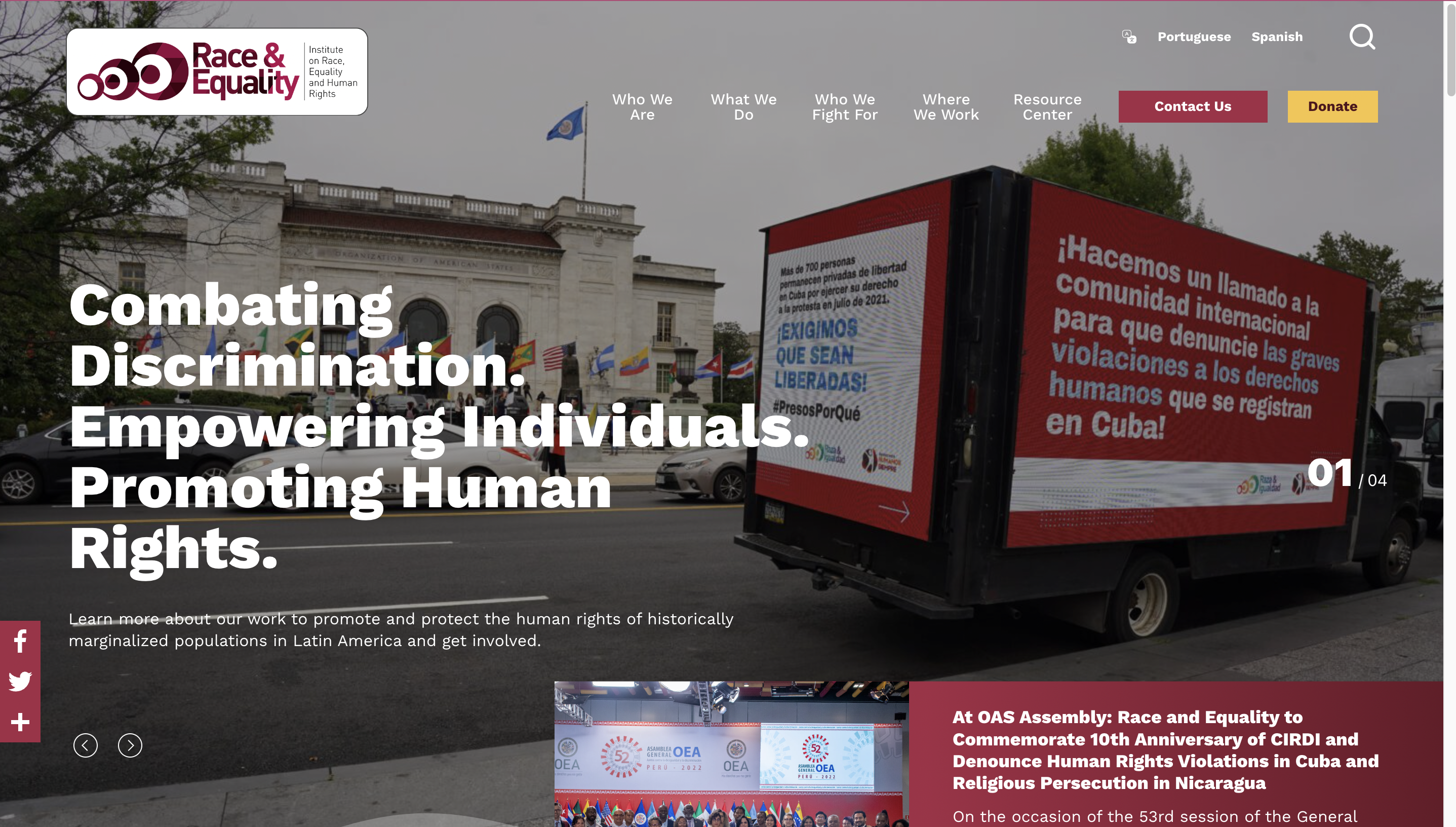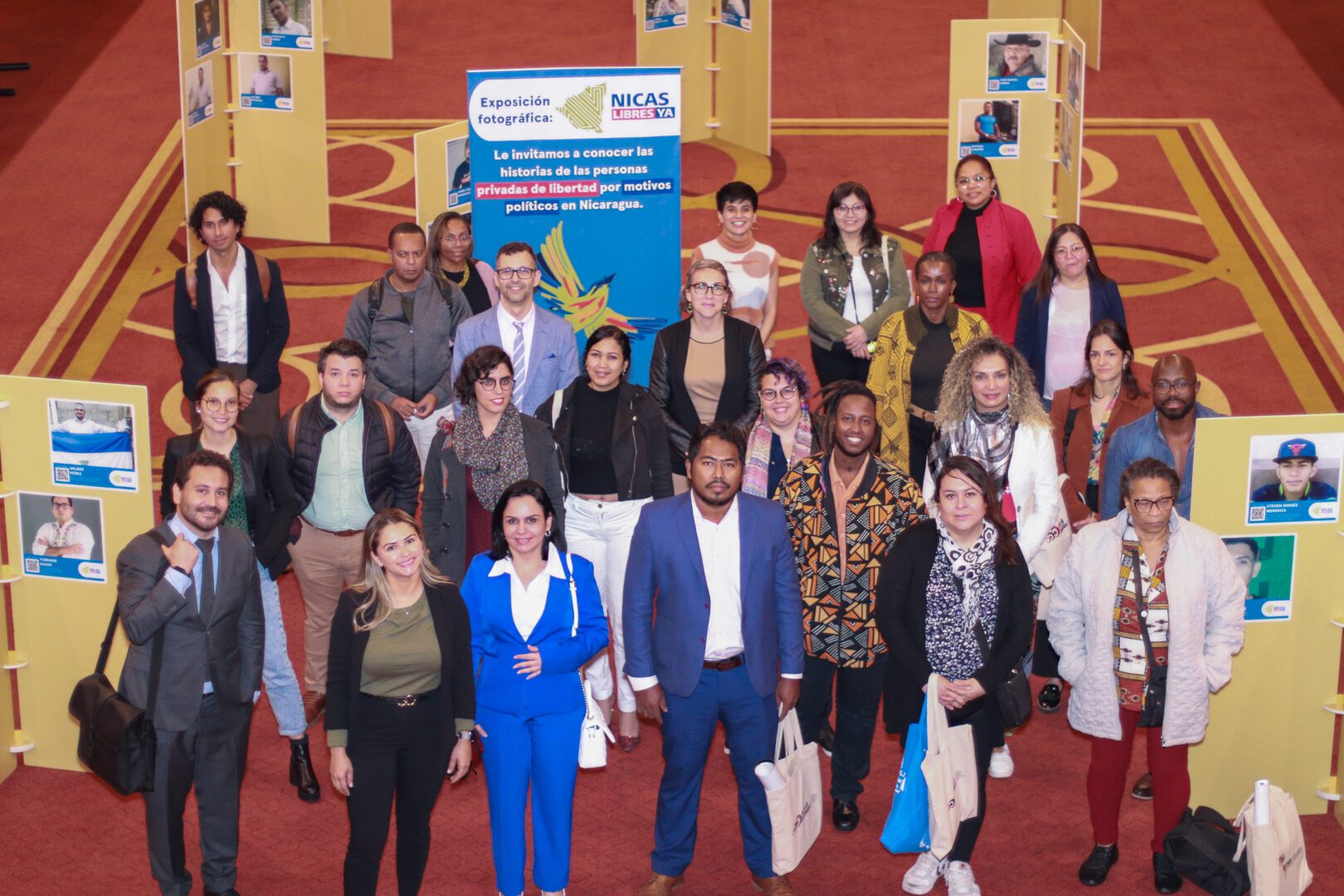Race and Equality Revamps Its Website, Broadening the Scope of Its Work in Defense and Protection of Human Rights in Latin America and the Caribbean
Washington DC, August 24, 2023 – With updated information, a new design and the integration of advanced content search tools, the Institute on Race, Equality and Human Rights (Race and […]

Washington DC, August 24, 2023 – With updated information, a new design and the integration of advanced content search tools, the Institute on Race, Equality and Human Rights (Race and Equality) is relaunching its website, www.raceandequality.org, this week. The site is fully available in Spanish, English, and Portuguese. In this way, the organization reinforces its commitment to documentation, training and advocacy in the defense and protection of human rights of historically marginalized and persecuted populations in different countries of Latin America and the Caribbean.
“It’s extremely important for Race and Equality to have a modern, up-to-date website that showcases the work that we do because it strengthens our advocacy work. We want all the information that is available on our website to be a resource for activists and human rights defenders across the region,” added Carlos Quesada, Executive Director of Race and Equality.
About the New Resource Center
One of the new features is the “Resource Center” section, where an advanced search tool provides a more organized and effective way to access all the content found on the website, such as reports, statements, and press releases. The search can be carried out by keywords, topics, country, and year.
Another important change is that now all the content is available in Portuguese, meaning that people can navigate and find information in the Portuguese version as they do in the Spanish and English versions. “When we decided to revamp the website, this (having the website in Portuguese) was a priority because we were aware of the lack of information available in Portuguese on the previous site, and because our work in Brazil has grown exponentially,” said Rodnei Jericó da Silva, Brazil Program Director at Race and Equality.
Navigating Race and Equality’s New Site
The new website offers a broader and more detailed look at Race and Equality’s work in eight countries in Latin America, as well as with the Organization of American States (OAS), the United Nations (UN), and the European Union (EU), all in partnership with civil society organizations. In order to delve deeper into the purpose and scope of our work, the “Where We Work” section provides a summary of the context, actions, and achievements in each country and organization.
In the same vein, the “Who We Are” section maintains the pages on Race and Equality’s mission and vision, its team, and partners, but contains new pages on the focus of the organization’s work, the impact achieved, and job opportunities available. Meanwhile, the “What We Do” section describes the lines of work in strategic litigation, capacity building, and documentation in greater detail.
The section “Who We Fight For” was created to outline our focus on actions in favor of marginalized populations, including Afro-descendants, the LGBTI+ community, indigenous peoples and women. These pages will house key information about the situation of these populations and our work carried out for the defense and protection of their human rights.
This new website is another step in strengthening Race and Equality’s work of documentation, capacity-building and advocacy for the protection and defense of human rights. We especially invite activists, independent journalists, human rights defenders, and policy-makers to visit our website www.raceandequality.org, to keep abreast of its advocacy actions, reports, the monitoring of human rights situations, and the production of pedagogical content.

